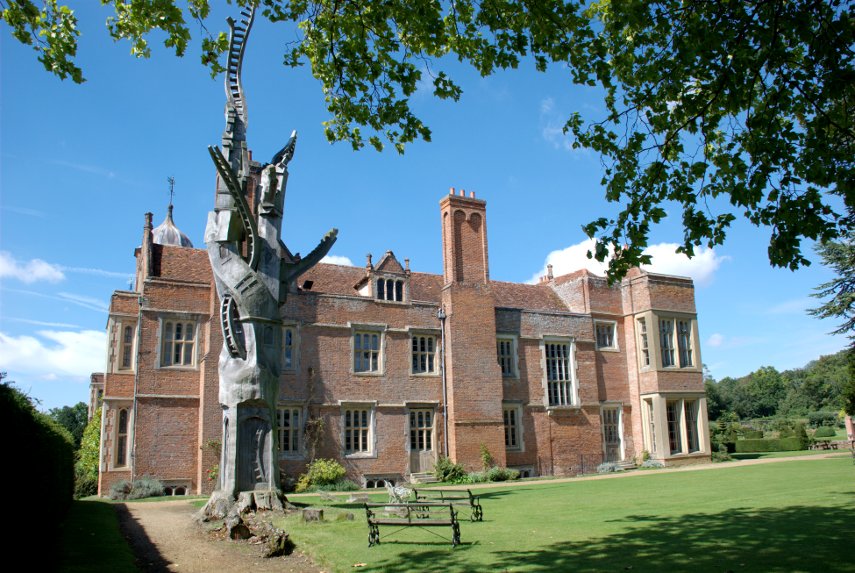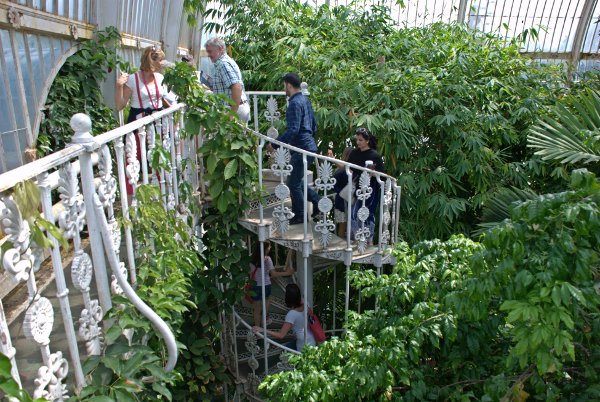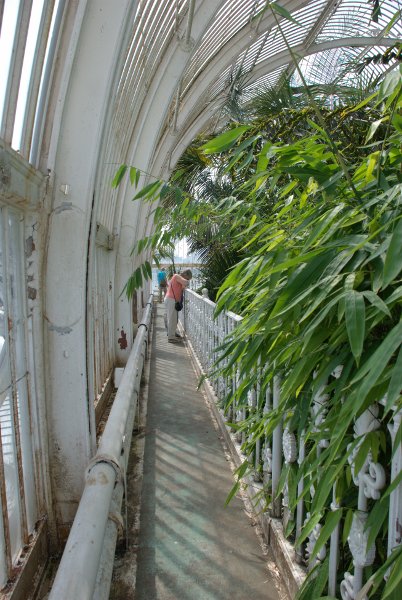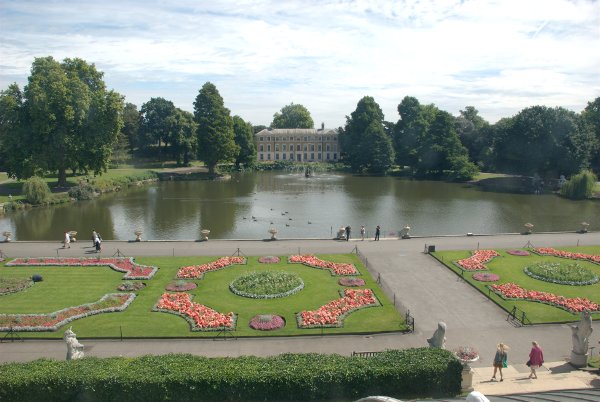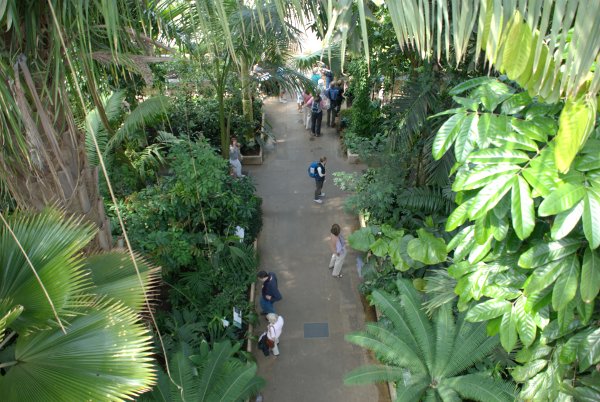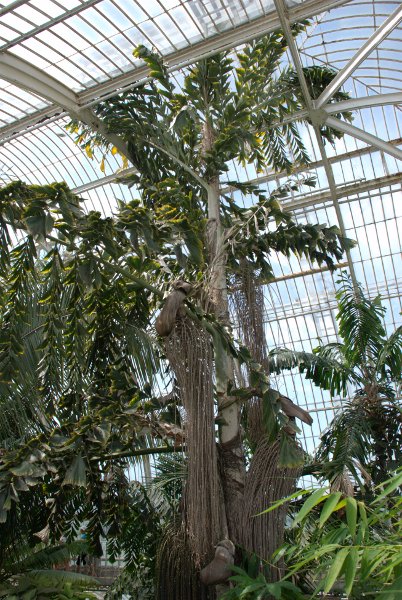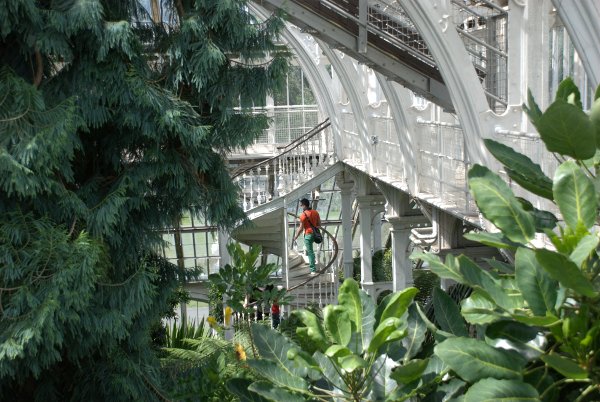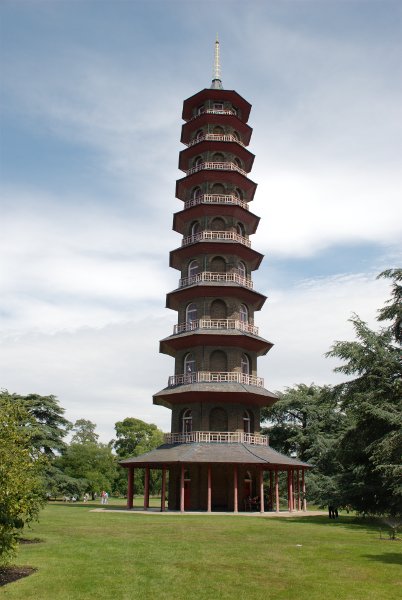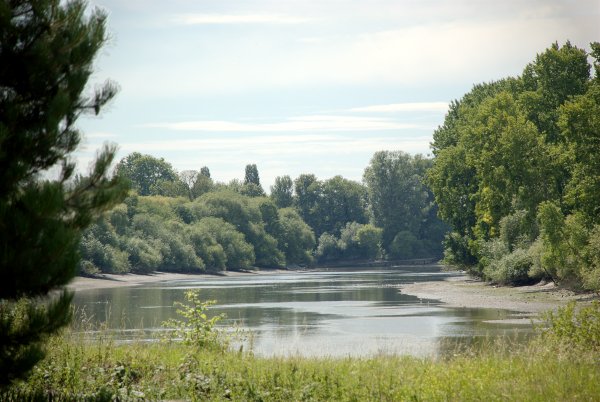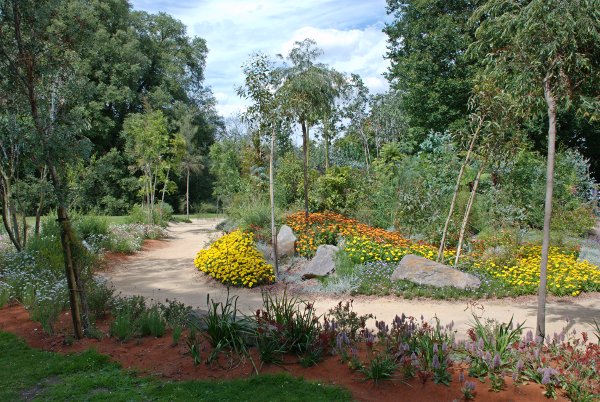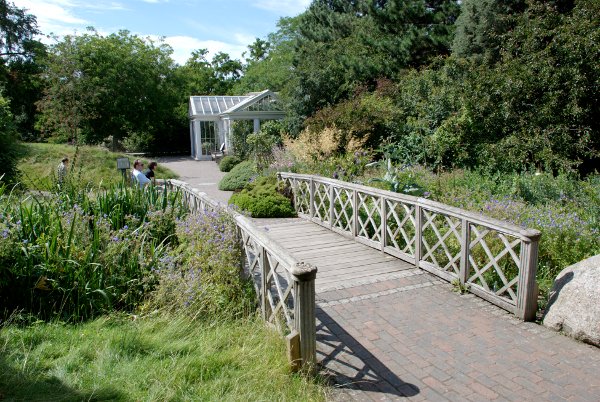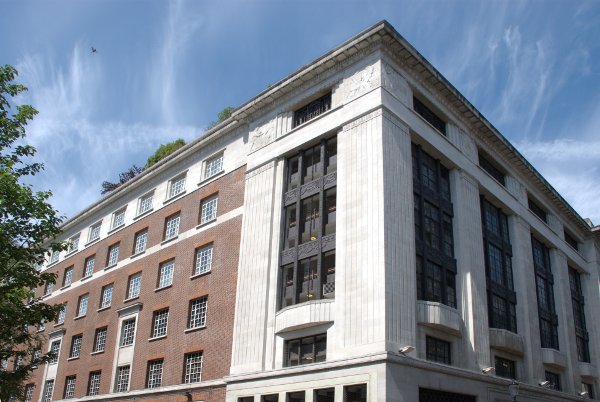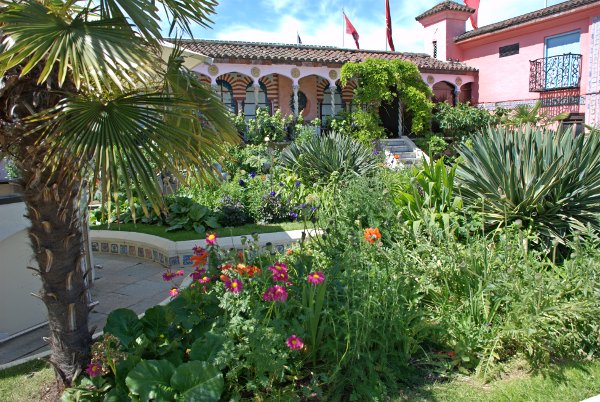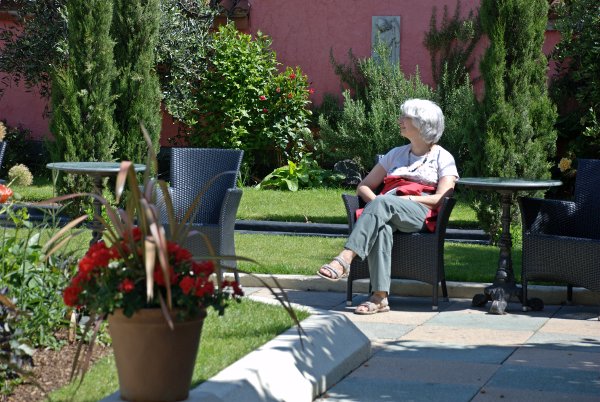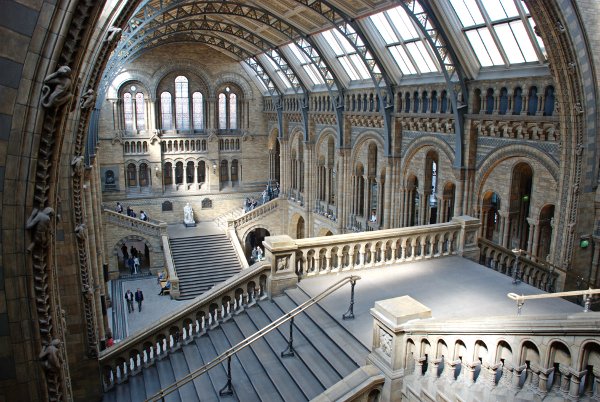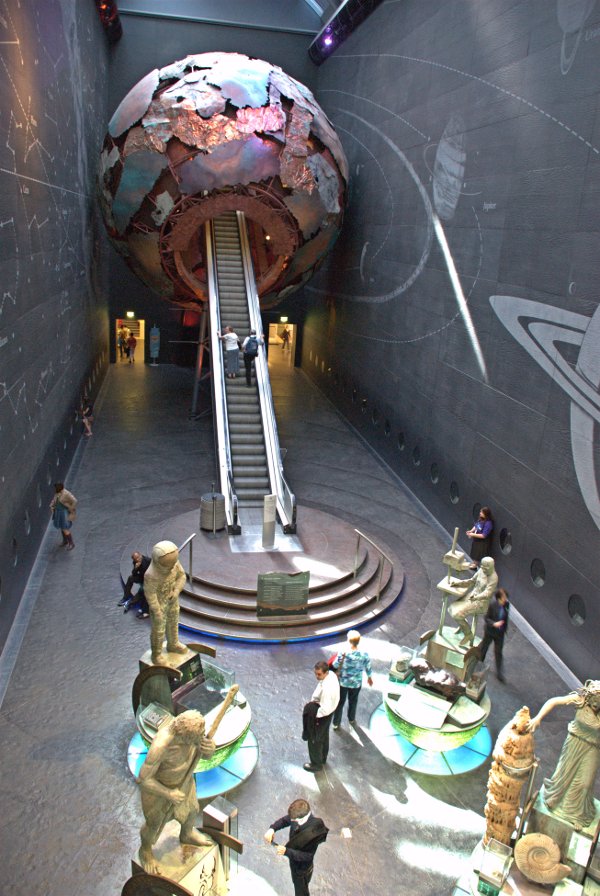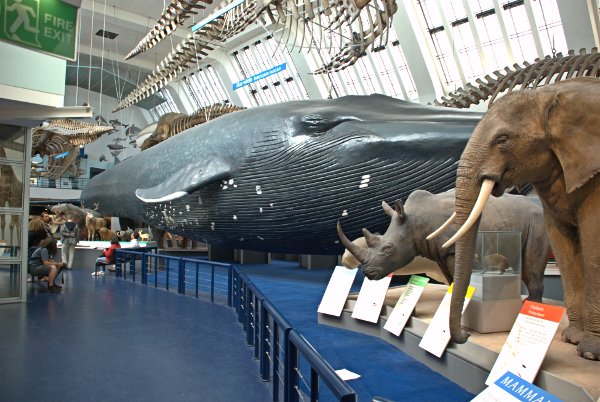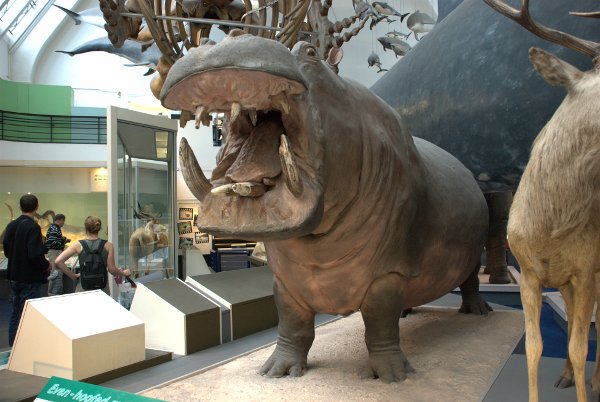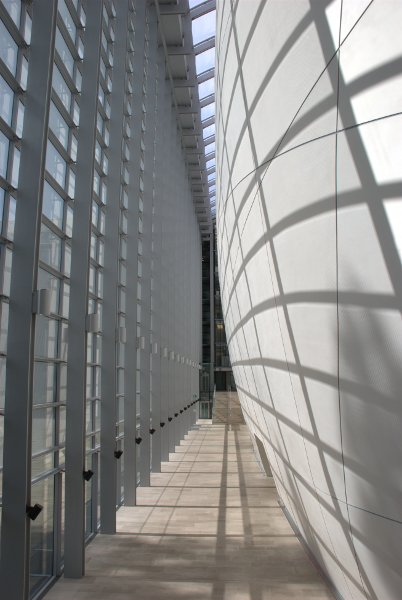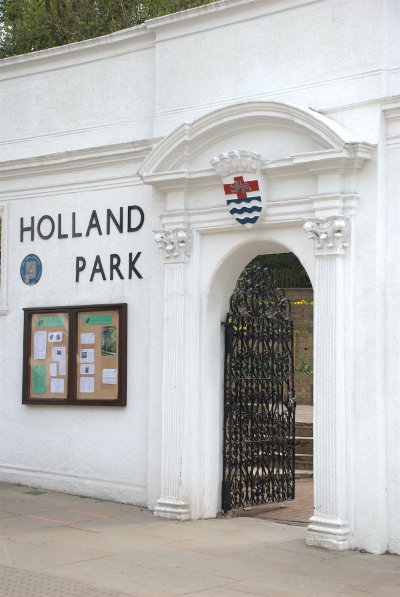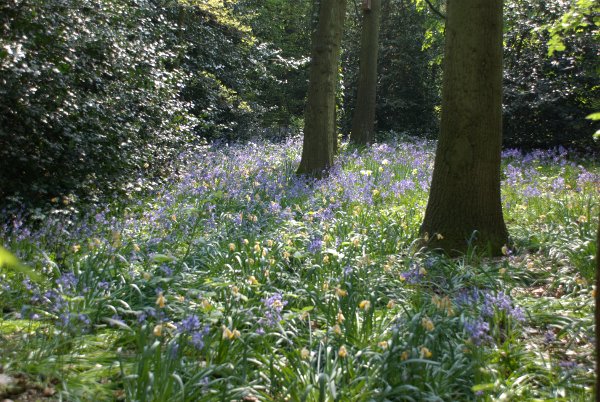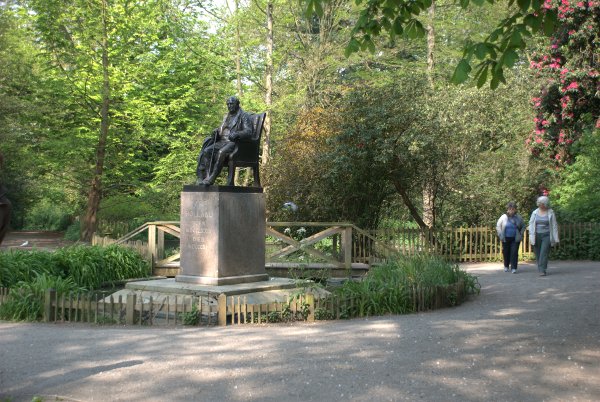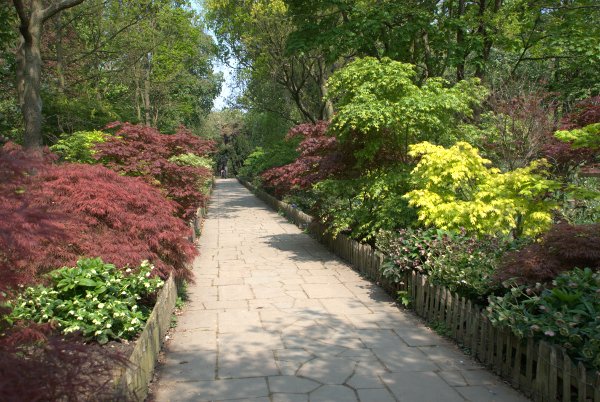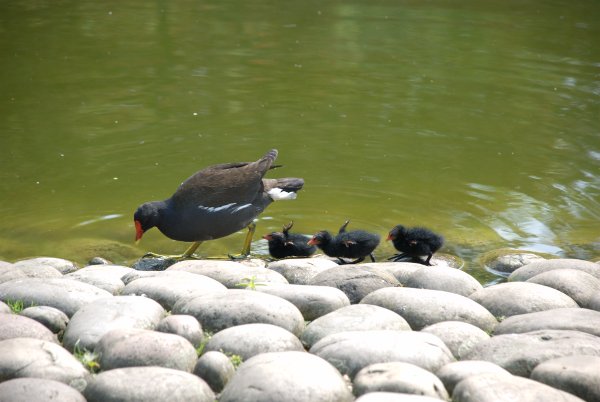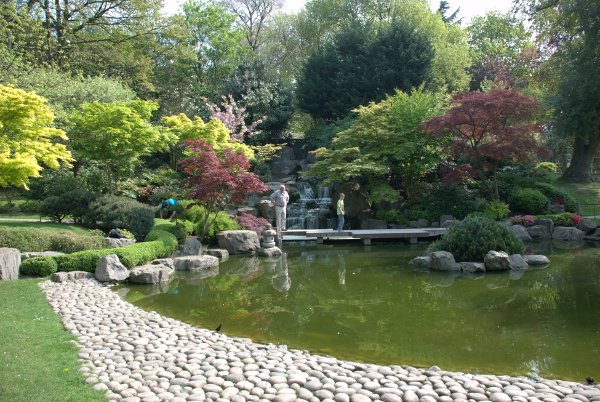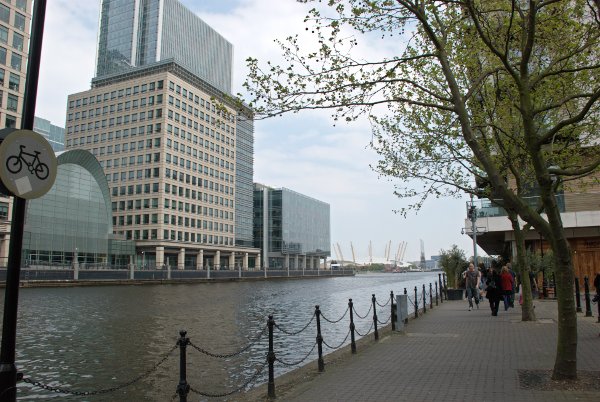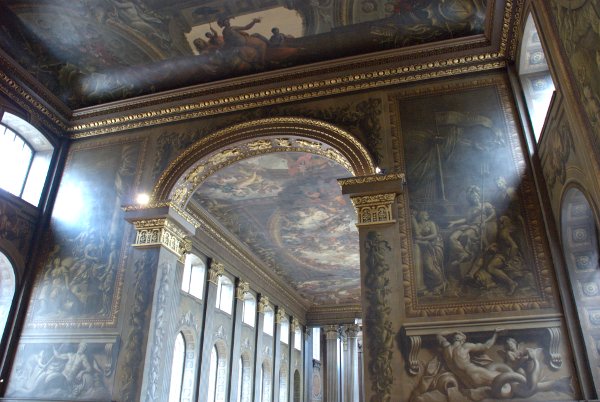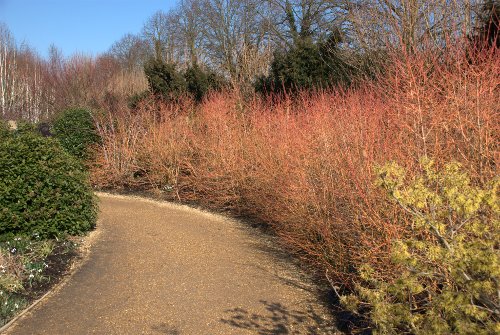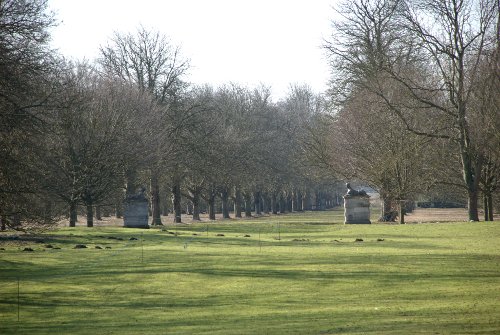Our railway line terminates at Liverpool Street Station on the east side of London and we pass through Stratford, where the Olympic Statium is being constructed, on the way. This trip we got off at Stratford to get on the London Overground which we hadn't used before.
The London Overground is really an ordinary overground railway line, like the one we use to get to Liverpool Street Station, but is run by Transport for London and is treated as part of the London Underground system so any Underground ticket will also cover you for use of the London Overground, for the relevant zones, without any extra payment. 
The trains themselves are of a new design where you can walk from one end of the train to the other along the central aisle without having to pass through any doors.

We were obviously on that train but where were we going?
The weather lately has become very unsettled with a lot of cloud and some areas have also had some rain so not a good time to go out and about. However Tuesday, yesterday, was forecast to be sunny and warm to the west of London so we were headed to Kew gardens.
The total journey for us was about two and a half hours and we arrived at the gate around 11:30 AM. There was a queue of about six people so it didn't take long to get in. We had our 2for1 voucher, and we get in at the 'concessions' price being 'decayed persons' which reduced the entry charge to 11.90 for both of us.
There are plants from all over the world here so we had a lot of countries to travel through. We'd better get started then.
We were told that the Palm House was closing today at 2:00 PM so we headed there first. What they didn't tell us is that the high level walkway was closed for filming which was a pity as I was looking forward to taking some high level photographs. 
This is an amazing Victorian building and is a 'must see'. I have to say I wouldn't like to be responsible for cleaning the windows. 

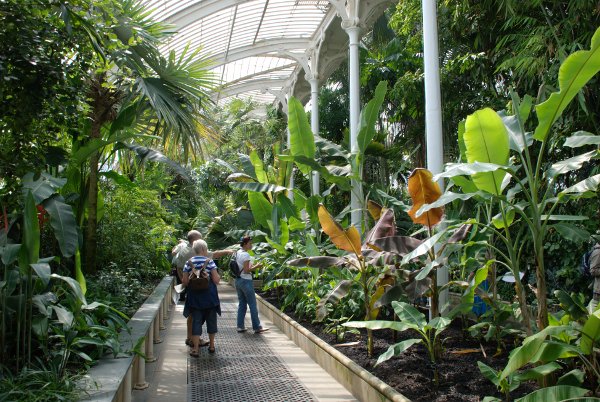
There is a lot of vegetation in here and it's fairly popular although it doesn't feel that one is jostling for space. It's also warm!
Behind the Palm House is the Rose Garden and the little building on the left is the Waterlily House of which more later.

One thing to say about Kew Gardens is that it's not quiet. Apart from the other visitors there are these thing going over at the rate of about one a minute. 
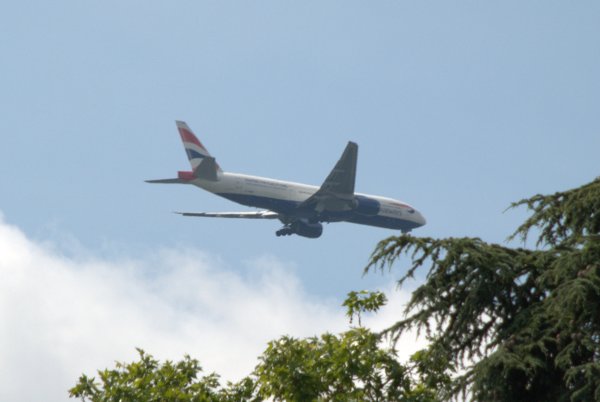
This is one of the 'smaller' ones. You can see here that they are offset a little to one side of us but later in the day they were directly overhead. You can blame it all on overseas visitors landing at Heathrow Airport. 
I took that photograph whilst we were walking from the Palm House to the Temperate House which is another of the stunning Victorian structures here. It is huge!
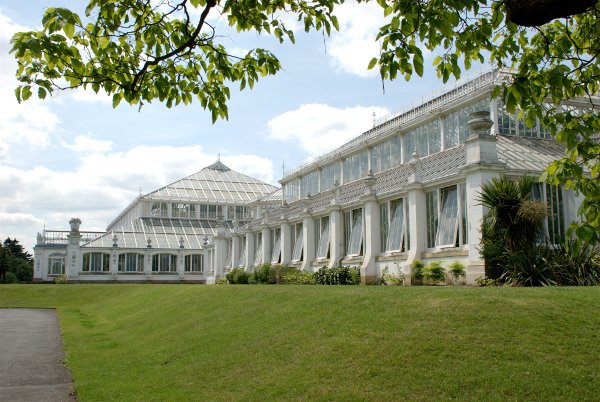

I couldn't go back far enough to get it all in because of the trees and so there is a section chopped off at each end (that's the section nearest the camera in the top picture of the two).
Like the Palm House this place is stuffed with plants some of which are impressively tall.
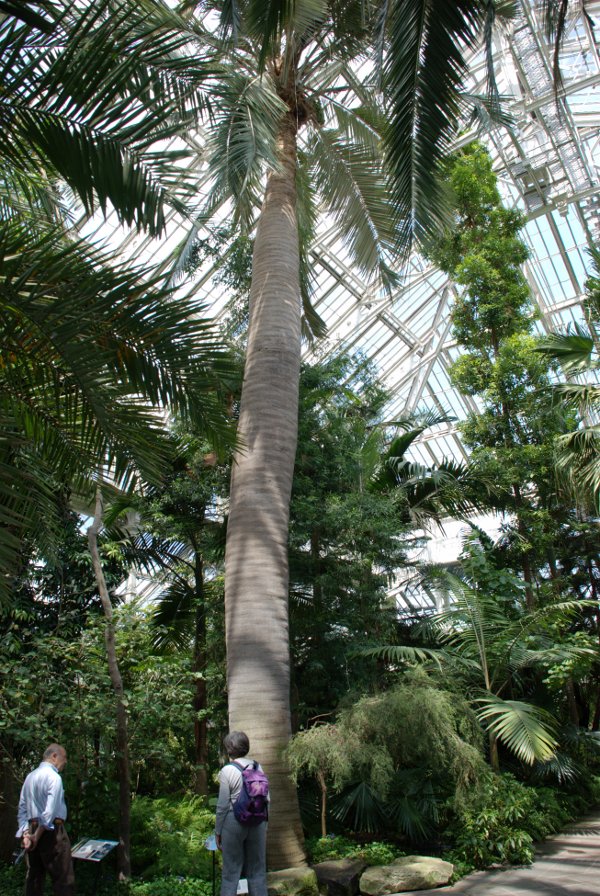
There is a small pond in here containing some fish which are impressively large.

Another thing they didn't tell us when we entered was that the high level walkway in this house was also closed for maintenance but this is how we would have reached it had it been accessible. Next time then I suppose. 

From the Temperate House we went up here.

It's called the 'Xstrata Treetop Walkway' and it runs in a complete circle through the treetops. You probably need a head for heights for this and if you lean on the rail along the edge of the walkway you can feel the whole structure swaying slightly but it's certainly worth it for the local views.

I should warn you that the floor of the walkway is made from metal which is pressed in a sort of 'open weave' fashion so that if you look down vertically through your feet you can see right down to the ground.
It was now around 1:30 PM so we decided to head for the White Peaks Cafe for some lunch and to go via the Sackler Crossing across Kew's main lake then via the Bamboo Garden, the Minka House and the Rhododendron Dell. It's going to be a late lunch.
The lake is only a short walk from the Treetop Walk and we were soon there.

The edges of the bridge are constructed using bronze posts which, from a narrow viewing angle appear to a solid wall but when looked at from a right angle appear as individual posts with gaps between.
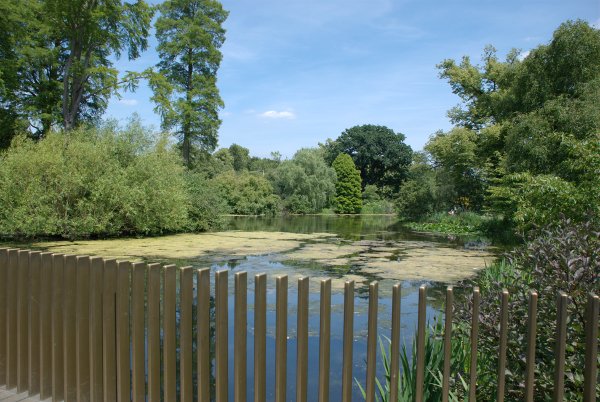
After crossing the lake we headed for the Minka House and on our way we saw these:

A group on their way to the Young Goose Convention perhaps? They are Canada Geese and when we were walking along the path we walked through a group of adults and young walking in the opposite direction and they didn't show the slightest nervousness of us humans as we passed through their group. Not surprising I suppose as they must see a lot of us.
This is the Minka House which was originally a farmhouse built around 1900 in a suburb of Okazaki City, near the southern coast of central Japan, dismantled, shipped to England and re-assembled here by Japanese carpenters as part of the Japan 2001 Festival.

Onward through the Rhodedendron Dell.
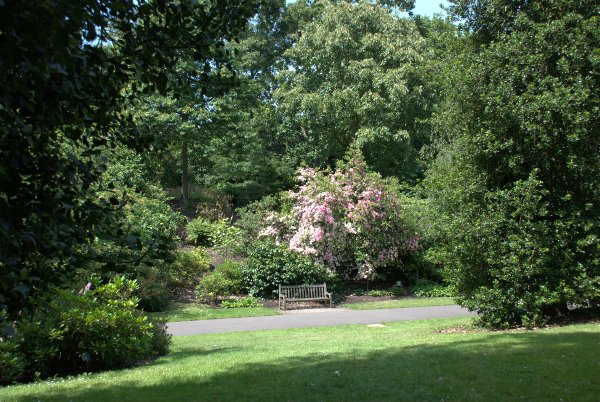
We eventually arrived at the White Peaks Cafe at around 2:00 PM. Food and drink in Kew Gardens is a little on the pricey side but, for a captive audience, it could be a lot worse. We each had a small quiche, smaller than the average saucer, with a few salad leaves and a sprinkling of sauce which cost 3.50 each. A slice of (fancy) cake, which we didn't have, would have been about the same. Drinks are reasonably priced. There seems to be little difference in prices at each of the available cafes/restaurants.
There is nothing to stop you bringing your own food and having a picnic outside in the gardens but of course you'll have to carry it round with you. There are also drinking fountains dispensing free ordinary water in a few places.
After lunch we heade off towards the Princess of Wales Conservatory and, on the way, passed by the 17th century Kew Palace. This is one of the Royal Palaces and has an extra charge if you want to visit – we didn't.

The Princess of Wales Conservatory was commissioned in 1982 to replace a group of 26 smaller buildings that were falling into disrepair. It was named after Princess Augusta, founder of Kew, and opened in 1987 by Diana, Princess of Wales. It is the most complex conservatory at Kew, containing ten computer-controlled climatic zones under one roof. Kew describe it as 'vast' – it is. I haven't seen a better place in which to get lost and thoroughly enjoy yourself whilst doing so.

As I mentioned above there are ten different climatic zones separated by double doors and these zones are also split into different levels with numerous connecting pathways and steps. When arriving at a junction it is difficult to decide which way to go because each way looks equally interesting.
This is what we saw after entering the conservatory:
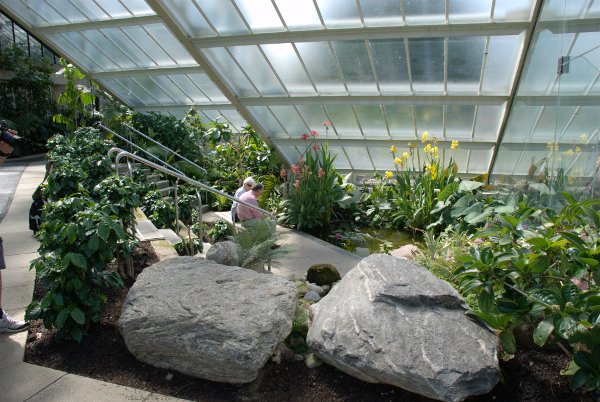
Quite an attractive little corner for a short rest. There are two ways on from here, right or left, and we went left through the Temperate Ferns zone and through into the Tropical Rainforest zone which is probably the largest of the zones.
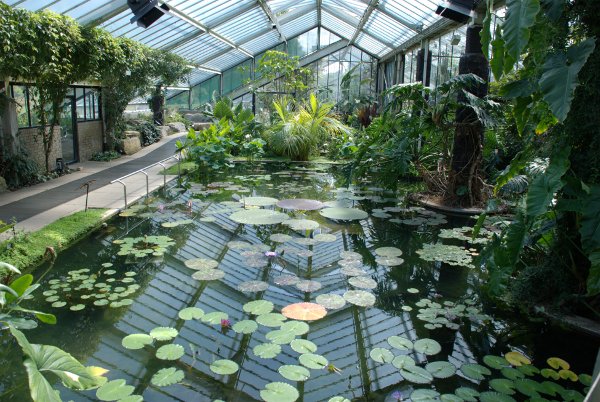
Phew! That's both from the visual and climatic points of vew. On the left you will notice a small door which is one of two entrances to the Carniverous Plants Gallery and I did notice that fewer visitors came out than went in. I wonder why that is?  These are a few of those plants although there are many different types.
These are a few of those plants although there are many different types.
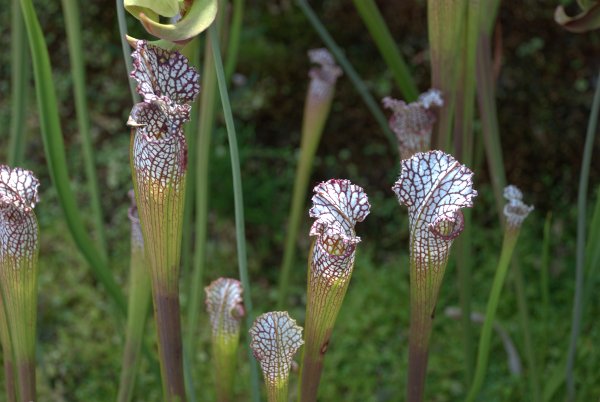
We did, eventually, find our way out and walked the short distance to the Davies Alpine House and Rock Garden.
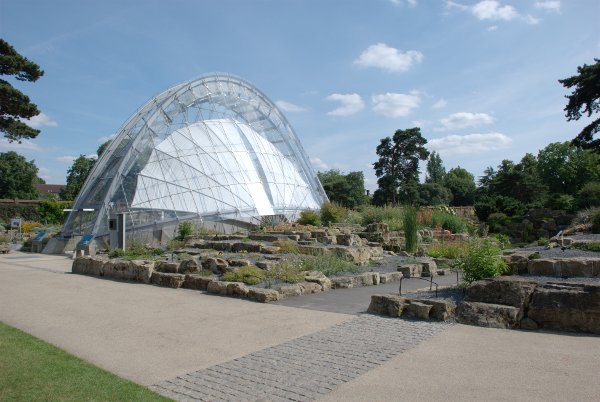
From the rock garden we went to the Waterlily House.

It was now getting close to the time we should leave so we elected to get a cup of tea and then made our way back to Kew Gardens Station and thence home.
There will be lots more photographs for those who are interested when I get around to creating the pages for Kew on the main web site.



